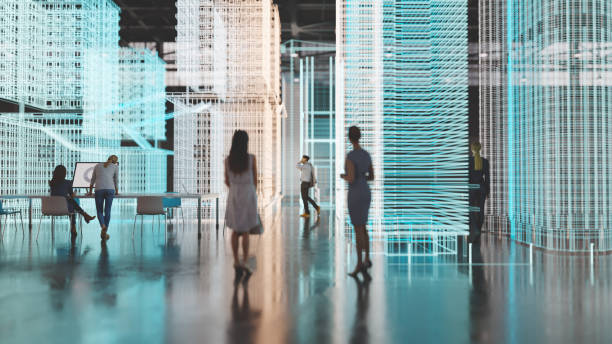Holographic Art: Redefining Spatial Perception
In the ever-evolving landscape of contemporary art, a groundbreaking medium is captivating audiences and challenging traditional notions of artistic expression. Holographic art, once confined to the realm of science fiction, has emerged as a powerful and innovative form of creative communication. This cutting-edge medium blends advanced technology with artistic vision, resulting in mesmerizing three-dimensional images that seem to defy the laws of physics. As holographic art continues to push boundaries and redefine spatial perception, it is revolutionizing the way we experience and interact with visual art.

Pioneers of the Medium
Early adopters of holographic art faced numerous technical challenges and limitations. Despite these obstacles, visionaries like Margaret Benyon, Rudie Berkhout, and Harriet Casdin-Silver pushed the boundaries of what was possible with holography. Their groundbreaking works laid the foundation for future generations of holographic artists and helped establish the medium as a legitimate form of fine art.
Technical Advancements and Artistic Possibilities
As holographic technology has advanced, so too have the artistic possibilities. Modern holographic artists have access to a wide range of techniques and equipment that allow for increasingly complex and intricate creations. Digital holography, in particular, has opened up new avenues for artistic exploration, enabling artists to combine computer-generated imagery with traditional holographic techniques.
The Immersive Experience of Holographic Art
One of the most compelling aspects of holographic art is its ability to create truly immersive experiences. Unlike traditional two-dimensional artworks, holograms exist in three-dimensional space, allowing viewers to interact with them in unique ways. As spectators move around a holographic installation, their perspective shifts, revealing new details and dimensions of the artwork. This dynamic viewing experience challenges our perceptions of space and reality, blurring the lines between the physical and the virtual.
Contemporary Holographic Artists Making Waves
Today, a new generation of holographic artists is pushing the medium to its limits and gaining recognition in the broader art world. Artists like Matthew Schreiber, whose large-scale laser installations create ethereal, geometric environments, and Betsy Connors, whose holographic portraits capture the essence of her subjects in startling detail, are at the forefront of this movement. Their works not only showcase the technical possibilities of holography but also demonstrate its potential for profound artistic expression.
Holographic Art in Public Spaces
As holographic technology becomes more accessible and sophisticated, we’re seeing an increase in its use in public art installations and exhibitions. Museums and galleries are incorporating holographic displays to enhance visitor experiences and provide new ways of engaging with art and historical artifacts. In urban environments, holographic projections are being used to create stunning visual spectacles that transform public spaces and challenge our perceptions of the built environment.
The Intersection of Art and Technology
Holographic art represents a fascinating intersection of art and technology, requiring artists to possess both creative vision and technical expertise. This union of disciplines is attracting a diverse range of practitioners, from traditional visual artists to engineers and computer scientists. The collaborative nature of holographic art is fostering new dialogues and pushing the boundaries of what’s possible in both the artistic and technological realms.
Challenges and Controversies
Despite its growing popularity, holographic art faces several challenges. The cost and complexity of creating high-quality holograms can be prohibitive for many artists, limiting access to the medium. Additionally, there are ongoing debates within the art world about the place of technology-driven art forms like holography. Some critics argue that the technical aspects of holographic art can overshadow its artistic merit, while others view it as a natural evolution of visual art in the digital age.
The Future of Holographic Art
As technology continues to advance, the future of holographic art looks increasingly bright. Emerging technologies like augmented reality and light field displays promise to further expand the possibilities of three-dimensional image creation. These developments could lead to even more immersive and interactive holographic experiences, blurring the lines between art, technology, and reality in ways we can only begin to imagine.
Conclusion
Holographic art stands at the forefront of a new era in visual expression, challenging our perceptions of space, reality, and the nature of art itself. As artists continue to explore and push the boundaries of this medium, we can expect to see increasingly innovative and thought-provoking works that redefine our relationship with the visual world. The evolution of holographic art serves as a testament to the enduring human desire to create, innovate, and see the world in new and exciting ways.





